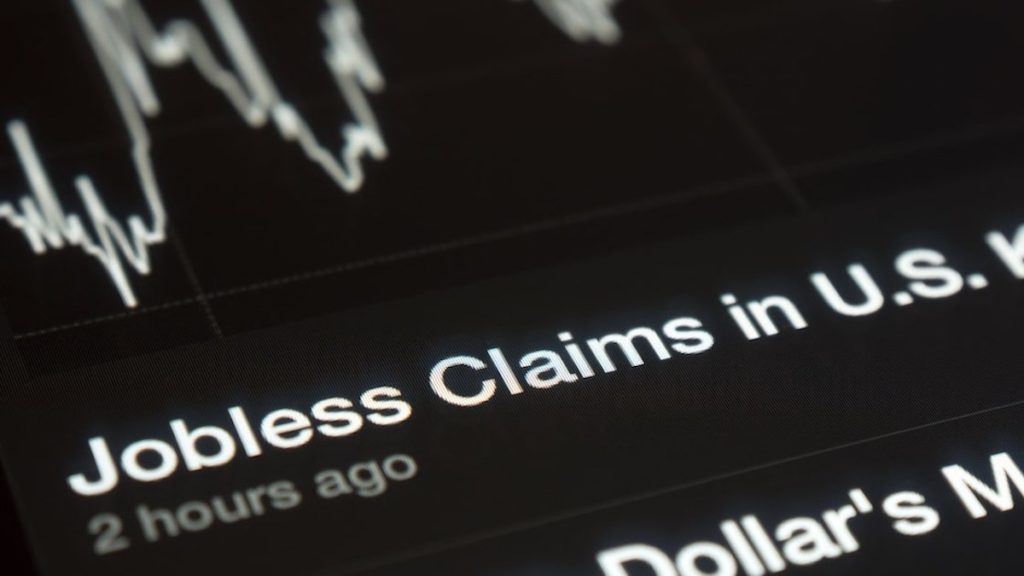
Jobless Claims Roughly Hit Forecast, Continue to Trend Down
Washington, D.C. (PPD) — The U.S. Labor Department (DOL) reported initial jobless claims rose as expected by 1,877,000 for the week ending May 30, due to the mitigation efforts to slow the spread of the coronavirus (COVID-19). That’s a decrease of 249,000 from the previous week’s upwardly (+3,000) revised 2,126,000.
Forecasts ranged from a low of 1,500,000 to a high of 1,800,000. The consensus forecast was 1,790,000. The 4-week moving average was 2,284,000, a decrease of 324,750 from the previous week’s revised average. The previous week’s average was revised up only by 750, from 2,608,000 to 2,608,750.
Roughly 43 million Americans have filed as a result of the efforts to slow the spread of the coronavirus (COVID-19), though millions now appear to have returned to work given lagging data.
Lagging Jobless Claims Data

The advance seasonally adjusted insured unemployment rate rose 0.5% to 14.8% for the week ending May 23. It fell 2.6 percentage points to 14.5% for the week ending May 16, marking the first decline since the start of the crisis. The rate for the previous week was revised down by 0.2 from 14.5% to 14.3%.
The insured unemployment rate hit the first high of the current crisis at 8.2% for the week ending April 4. The all-time high prior to that was 7.0%, recorded in May of 1975. On April 11, it rose to 11.0% and 12.4% on April 25.
Under the Trump Administration, this rate had fallen to an all-time low 1.1% and remained at 1.2% just weeks ago, as recently as March 14. But that was before coronavirus (COVID-19) mitigation efforts.
The advance number for seasonally adjusted insured unemployment during the week ending May 23 was 21,487,000, an increase of 649,000 from the previous week’s revised level. The previous week’s level was revised down by 214,000 from 21,052,000 to 20,838,000.
The 4-week moving average was 22,446,250, a decrease of 222,500 from the previous week’s revised average. The previous week’s average was revised down by 53,500 from 22,722,250 to 22,668,750.
Extended Benefits were available in 22 states during the week ending May 16. Those states included Alaska, California, Connecticut, Georgia, Louisiana, Maine, Massachusetts, Michigan, Minnesota, Montana, Nevada, New Hampshire, New Jersey, New York, Ohio, Oregon, Pennsylvania, Puerto Rico, Rhode Island, Vermont, Washington, and West Virginia.
During the week ending May 16, 35 states reported 10,740,918 individuals claiming Pandemic Unemployment Assistance benefits and 28 states reported 209,692 individuals claiming Pandemic Emergency Unemployment Compensation benefits.
The highest insured unemployment rates in the week ending May 16 were in Nevada (24.9), Maine (22.9), Michigan (22.9), Puerto Rico (22.7), Hawaii (20.6), New York (19.2), Rhode Island (18.6), Washington (17.7), Louisiana (17.4), and New Hampshire (16.8).
The largest increases in initial claims for the week ending May 23 were in Maine (+11,941), Oklahoma (+10,274), Michigan (+7,859), Kentucky (+6,417), and Oregon (+4,913), while the largest decreases were in Washington (-90,683), Florida (-49,993), California (-41,169), New York (-34,875), and Illinois (-14,517).





